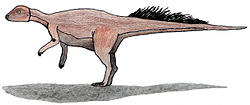42 letters

- Parastratiosphecomyia stratiosphecomyioides Brunetti 1923 - family Stratiomyidae. The Southeast Asian soldier fly, native to Thailand, has the longest valid scientific name for any animal, and any macroscopic organism. [7] [8]
- Thermoanaerobacterium thermosaccharolyticum (McClung 1935) Collins et al. 1994 - family Thermoanaerobacteraceae. This anaerobic, gram-positive bacterium was previously named Clostridium thermosaccharolyticum (32 letters), but later became one of the longest accepted binomials upon being reclassified in the genus Thermoanaerobacterium . Its complete name means "A rod which grows in the absence of air at high temperatures" "thermophilic and sugar-dissolving". [9] [10]








